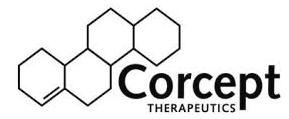Prolactinomas
These pituitary tumors (also called adenomas) secrete excessive amounts of prolactin and are the most common type of pituitary tumor seen clinically. Prolactin is the hormone that stimulates milk production by the breasts. Prolactin-producing tumors exist “silently” in up to 5-10% of the adult population. Prolactinomas generally have very different presentations in women and in men. In women, relatively small elevations in prolactin cause irregular menstrual periods or complete loss of menses (amenorrhea), ability to ovulate (remain fertile) and may cause milky discharge from the breasts (galactorrhea). In addition, women may have a reduction in their sex drive. The normal prolactin level is < 20 ng/ml. In most women the tumors are detected when they are small (microadenomas) and the prolactin level is only moderately elevated (30 – 300 ng/ml). In contrast, in men prolactinomas are usually not detected until they are large (macroadenomas), most have prolactin levels over 500 ng/ml. Most men diagnosed with a prolactinoma have some degree of loss of sex hormone production. They may also have visual loss (from compression of the optic nerves or optic chiasm) and/or headache. A minority of patients with large tumors may have bleeding into the tumor (pituitary apoplexy) causing relatively sudden onset of headache, visual loss, double vision, and/or pituitary failure.
DIAGNOSIS
Hormonal Diagnosis
The diagnosis of a prolactinoma is confirmed by demonstrating persistently elevated blood levels of prolactin. A prolactin level of over 150-200 ng/ml is almost always due to a prolactin secreting pituitary adenoma. In all patients with suspected pituitary tumors, a complete pituitary hormone evaluation should be performed. This testing is especially important in patients with potentially large tumors who are likely to have some degree of pituitary failure (hypopituitarism). It is important to note that moderate elevations of prolactin (30 – 200 ng/ml) can occur as a result of several other causes, which must be excluded prior to invoking a pituitary tumor. The most common causes are listed below:
- pregnancy or in the post-partum period
- stress (discomfort, exercise, low blood sugar)
- low thyroid function (hypothyroidism)
- kidney failure
- liver failure
- medications (such as anti-ulcer and antidepressants)
- “stalk effect”
The “stalk effect”: This may be seen with any disease within or near the pituitary gland and stalk that interferes with the delivery of dopamine (a neurotransmitter) from the hypothalamus to the prolactin secreting cells of the pituitary. Therefore, other types of pituitary adenomas, craniopharyngiomas or other tumors or masses may cause modest elevations in prolactin.
The “hook effect”: In patients with very large prolactinomas, the initial prolactin level may be read erroneously as normal or only mildly elevated. In such patients, it is important to confirm that the laboratory performed multiple dilutions of the blood sample to avoid this error known as the “hook effect”. When dilutions are performed on such a blood specimen, the actual prolactin level may be much higher.
Imaging
Most prolactinomas can be visualized on both MRI and CT scans of the pituitary gland. Such scans should be performed without and following contrast administration.
TREATMENT
Medical Therapy
In general, the first line of treatment for patients with a prolactinoma is medical rather than surgical. Approximately 80% of patients will have their prolactin levels restored to normal with dopamine agonist therapy. The most commonly used agents are bromocriptine (Parlodel) or cabergoline (Dostinex). Most women also have a return of menses and many become fertile again. The size of the prolactinoma will be reduced in the majority of patients to varying degrees, which often results in improved vision and resolution of headaches.
Bromocriptine is generally instituted slowly to minimize side effects. It is recommended that treatment be initiated with no more than one 2.5mg tablet per day at mealtime. This will minimize the major side effect of nausea and gastrointestinal upset. The dose is then gradually increased over several days or weeks up to a daily maximum usually not exceeding 10 mgs. The dosage is adjusted to achieve a normal prolactin level.
Cabergoline (Dostinex), an oral long-acting dopamine agonist, has been approved by the Food and Drug Administration for hyperprolactinemia. It has the advantages of only being taken twice per week and generally has fewer side effects than bromocriptine. It has also been shown to be effective in patients whose prolactinomas are resistant to bromocriptine therapy. The usual starting dose is 0.5 mg twice per week. The dose may be increased up to 1.0 mg twice per week.
Surgery
Women with microadenomas – Transsphenoidal surgery can be considered as first line therapy in women with relatively small tumors (micro-prolactinomas) that do not invade the cavernous sinus and whose prolactin level is 200 ng/ml or less. In these patients, the long term cure rate is generally as high as 80-90%.
Macroadenomas (men or women)- For larger tumors, the surgical cure rate is generally considerably less. In men with large invasive prolactinomas, it is particularly low, averaging less than 30%. For this reason, dopamine agonist therapy is usually tried first. In patients who present with loss of vision, dopamine agonist therapy is also usually indicated first unless the visual loss has occurred relatively suddenly over a period of one to two weeks or less. For the minority of patients that do not respond well to cabergoline or bromocriptine, surgery should generally be performed within 6 months of starting dopamine agonist therapy. After more than six months of such therapy the tumor may become more fibrotic and more difficult to remove.
Pituitary Apoplexy associated with prolactinoma- Patients with macro-prolactinomas may have acute hemorrhage into the tumor (pituitary apoplexy) causing relatively sudden onset of headache, visual loss, double vision, and/or pituitary failure. Urgent transsphenoidal surgery is generally required for such patients.
Radio-therapy
Because most patients with prolactinomas respond well to dopamine agonist therapy, radiation is indicated in only an occasional patient. Stereotactic radiation is generally preferred over external beam radiation therapy because a higher dose of radiation can be delivered to the tumor with less radiation being given to normal brain structures.






